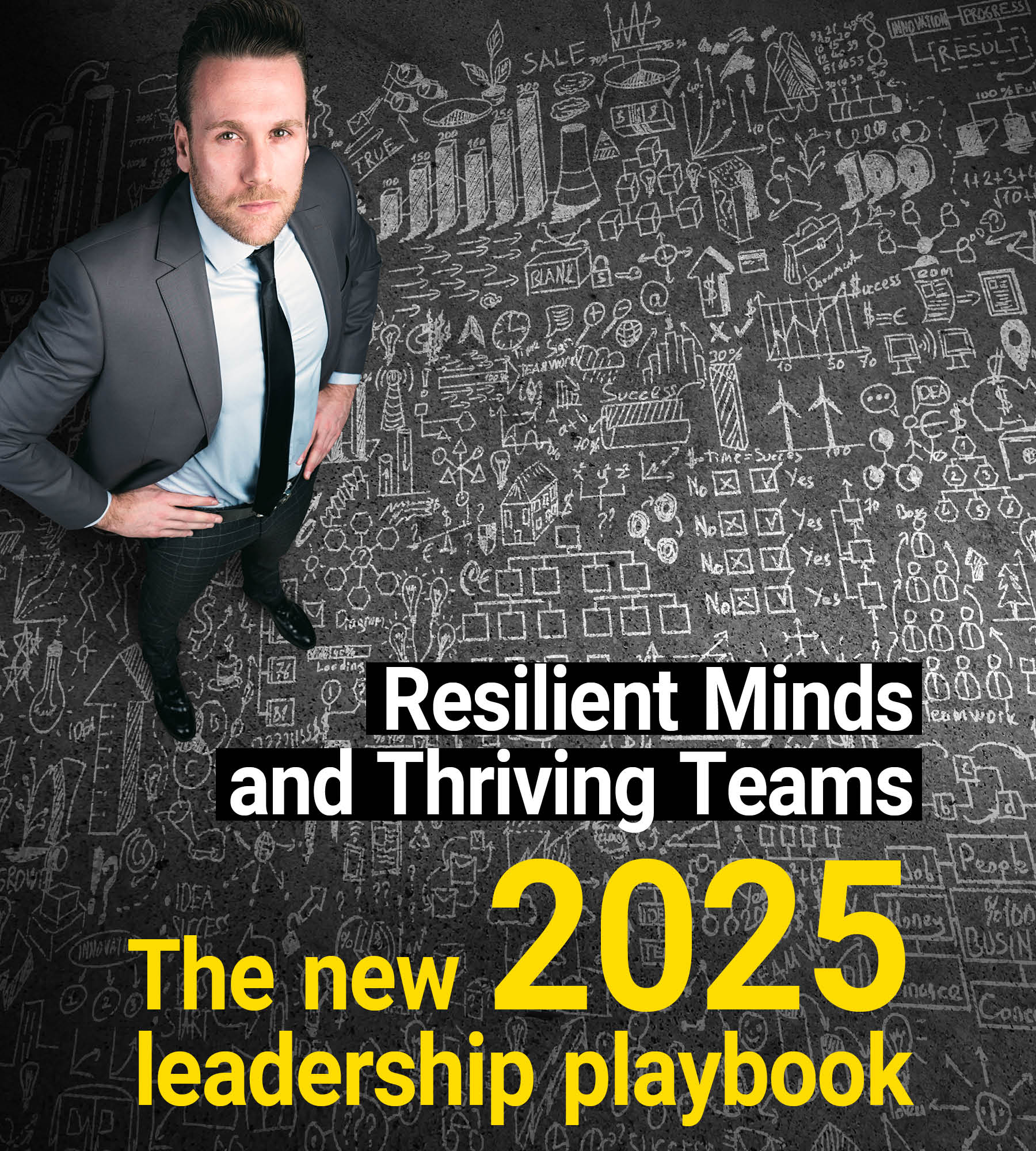Language
You can read the magazine in one of the following languages
Geolocation
You can read the global content or the content from your region

Today’s leaders face unparalleled challenges in the modern, fast-changing business environment while building resilient high-performing teams. As we enter 2025, it is now obvious how employee wellbeing and organizational success are linked together.
Here are new strategies for developing resilient teams and ways of maximizing productivity by leaders, with a focus on wellbeing.
Stress and burnout are the silent killers of organizational success. The cost of disengaged employees to the global economy is a staggering US$8.9 trillion per annum – nine percent of GDP.

But the human toll is just as alarming: low morale, high turnover and decreased creative output. Such challenges demand innovative solutions from today’s leaders. Burnout is no longer an individual problem; it’s now a systemic issue deeply rooted in the culture of an organization.
In confronting this challenge, leaders will need to review strategies for success based on wellbeing. Where does one start?
With the realization that resilience isn’t only a personal trait, but rather a leadership imperative.
Research keeps pointing to the link between leadership behavior and team performance. According to McKinsey, 70 percent of a team’s engagement is attributed to its leader. To sum it up, resilience starts from the top leadership.
What you can do today:

The basic pillars of successful teams are built on the holistic wellbeing of their members. Let’s outline:
1. MIND: Creating focus amid distraction
In a world filled with constant notifications, true focus has become a rare commodity. Leaders can cultivate mindfulness to counteract distractions. Research shows that mindfulness practices can significantly improve focus and productivity.
Actionable tip: Have teams work in focused 25-minute sessions with five-minute mindfulness breaks using the Pomodoro technique.
2. BODY: Encouraging physical activity
Sedentary work environments are hazardous to both physical health and cognitive functioning. Simple interventions, such as movement breaks, can enhance focus and energy levels substantially.
Actionable tip: Introduce ‘standing meetings’ or schedule team stretch breaks to combat the afternoon slump.
3. SOUL: Establishing emotional connections
The scientifically proven benefits of gratitude include increased happiness and team bonding; just showing gratitude can lead to improved wellbeing and increased job satisfaction.
Actionable tip: Begin your next team meeting by having each participant share one thing for which they are thankful, such as a work situation that may have started out challenging, but ended a positive way. Focusing on the small ‘wins’ boosts up the individual sharing the story and creates long-term deeper connections with the whole team.
Investing in employee wellbeing is not only ethical but also smart business. A study by Avalere Health found that wellbeing programs generate a 47 percent return on investment – for every dollar spent, businesses realize US$1.47 in benefits.
Beyond the financial returns, these programs build long-term resilience, which becomes a critical asset in navigating change.
Things that can be done now:

Leaders need a complete tool kit of hands-on strategies for successful team support. The following are three established approaches.
1. Daily check-ins
The concise and coherent relations build a sense of community and trust among the members. As stated by Gallup, employees who feel that their voices are heard are 4.6 times more likely to feel empowered to contribute to their best performance.
Actionable tip: Take 10 minutes each day to connect with your team members, discussing not only work but also personal accomplishments and struggles.
2. Breathing breaks
Mindful breathing helps to reduce stress and increase focus. Techniques such as box breathing or the ‘4-7-8 method’ are fast and effective.
Actionable tip: Include one-minute breathing exercises in your meeting agendas.
3. Micro-exercises for clarity
This will keep you away from feeling overwhelmed, and research has shown that breaking down big projects into smaller tasks increases productivity and reduces stress.
Actionable tip: Project management tools can help assign micro-tasks with clear deadlines, making it easier to celebrate small wins along the way.

Resilience is not constructed in a vacuum; it’s the result of combining human needs with strategic objectives. Here’s why this two-pronged approach matters:
The 2025 workplace will demand more from leaders. Resilience and wellbeing will no longer be ‘nice to have’; they’ll be critical drivers of success. Leaders must be proactive in supporting their people, from fast-track initiatives to championing long-term cultural shifts.
Remember, through changes, creating resilient teams is not about resisting the storm but rather about creating the right atmosphere where people will thrive and innovate toward your organization’s progress.
This is exactly what leaders need to do to get ready today for the emerging workplace climate.

Heidi Horne
Contributor Collective Member
Heidi Horne is a renowned happiness and mindfulness speaker who is dedicated to transforming corporate environments into joyous, productive and profitable spaces. As the Founder of Happy Leaders programs, Heidi uses the Workplace Happiness Formula as the bedrock for her work: Happy Leaders plus Happy Teams equals Happy Customers. For more information visit https://www.heidihorne.co/